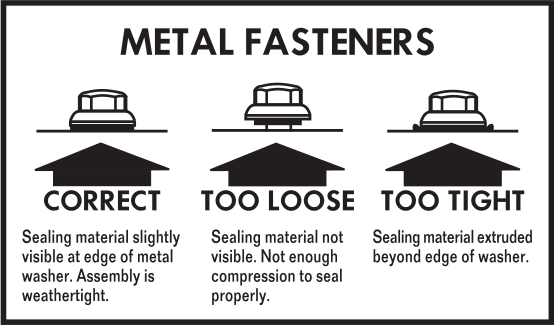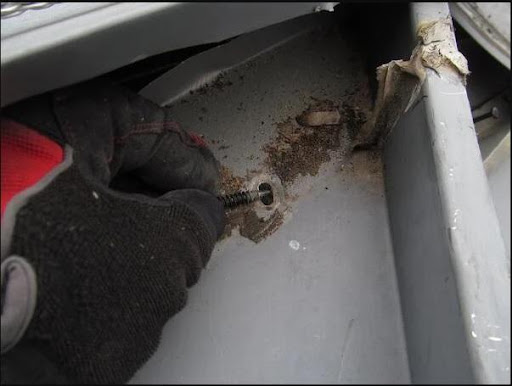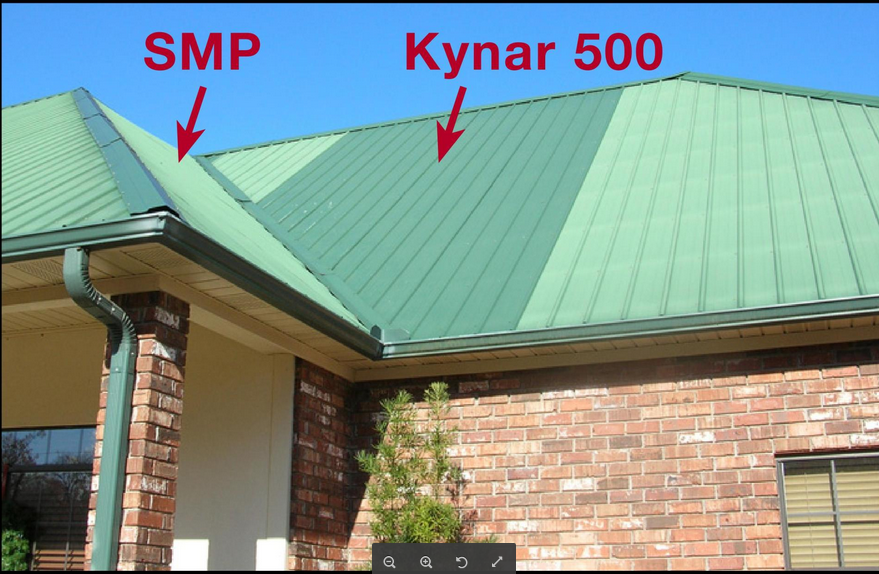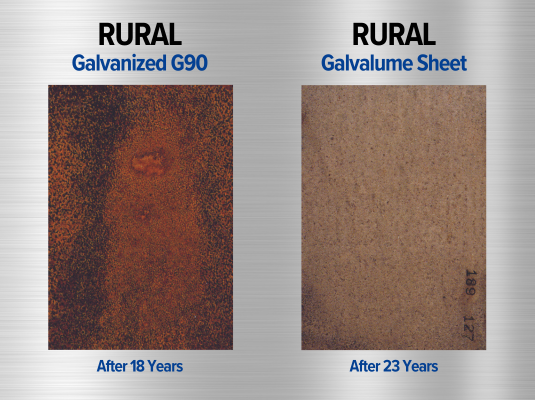8 FAQs for Installing Exposed Fastener Metal Roofs
1. What’s different between the installation of exposed fastener and standing seam metal roofs?
Some primary differences exist between the install approach of exposed and concealed fastened roof panels. The most obvious involves the panel attachment method. Exposed fastened systems rely on a fastener (most often a screw) piercing through the metal and attaching to the substructure below.
In contrast, standing seam (or concealed fastened roofs) typically rely on fastening a clip to the substructure and then engaging roof panels with that clip by snapping or mechanically seaming the panels together. Cover width is another big difference between the two-panel types. Standing seam systems generally cover 16-18" per panel, whereas exposed fastener panels most often cover 36". Therefore, exposed fastener panel systems install much more quickly than their concealed fastener counterparts.
2. How important is fastener selection and installation?
The role of the fastener in an exposed fastener roofing system is to physically attach the metal panels to the roofing deck or substructure.
Proper fastener selection and installation are critically important when installing an exposed fastener metal roof. Screws must be installed perpendicular to the roof plane (not on an angle), and the washer should be properly seated. The following image shows a fastener installed correctly, too loose, and too tight.

As you can imagine, screws installed too loosely, often referred to as underdriven, allow a quick entry point for water into the building envelope. In contrast, screws installed too tightly, referred to as overdriven, may perform better than underdriven screws initially. However, the washers on the screws are not designed to be compressed and often crack and erode quickly after being overdriven during installation.
The washer on the screw is also an essential element that can vary greatly. As might be expected, standard screws include a washer that is separate and independent of the screw head; however, many suppliers also offer screws with a washer bonded to the screw head. The one-piece assembly of a bonded cap/washer eliminates the opportunity for water to enter around the void between the screw head and the washer.
3. How far apart should exposed fasteners be on a metal roof? And where do they go?
Unfortunately, there is no hard and fast rule for fastener installation across all panel types and manufacturers. Instead, it's important to realize that manufacturers have designed and tested each panel system for attachment in a specific manner, and it's important to follow those instructions. For example, at McElroy Metal, we even specify the sequence and order of which fastener is installed first, second, etc., across the width of the panel. To learn more, visit the Downloads section of our website and check out the Installation/Product Information Books.
4. What is the best way to ensure hitting the support structure underneath the panels with the fasteners?
The chalk line still seems to be the tool of choice, although some installers like to measure and predrill the panels before placing them on the roof. If predrilling panels, it’s important to sweep the shavings from the panel immediately as the shavings can adhere to the panel and rust.
5. How do metal roofs with exposed fasteners compensate for expansion and contraction caused by thermal cycling?
Due to the panel attachment method to the structure, exposed fastener panels do not allow for expansion and contraction caused by temperature changes. Consequently, over time, a slot can be created by the force of expansion and contraction around the fastener and create what is commonly referred to as "slotting," shown in the photo below. When this situation occurs and becomes larger than the washer on the fastener, the water integrity of the building is compromised. When this occurs, the problem can be easily fixed by replacing the screw with one slightly larger than the original fastener.

Due to this phenomenon, it's generally recommended to use standing seam panel systems for projects with panel runs of 40' or greater. Standing seam systems use a series of clips to attach to the roof structure, allowing for the expansion and contraction necessary in longer panel runs.
In contrast, projects with panel runs of 40' and less often use exposed fastener systems with great success since the shorter panel length experiences minimal expansion and contraction.
6. What type of paint system should I use for an exposed fastener metal roof?
It’s vital to choose a Kynar® paint system instead of a Silicone Modified Polyester (SMP) system because Kynar paint systems retain their like-new appearance and experience minimal fade and chalk over time. The panels in the photo below were the same color when originally installed. Eight years later, the extreme fade and chalk of the SMP system in contrast to that of the Kynar 500 illustrates the stark performance differences between the two systems.

7. What’s the best substrate for an exposed fastened metal roof?
The most popular steel substrates in the metal roofing and siding industry are Galvanized and Galvalume. Galvanized substrates are coated with a zinc alloy, while Galvalume substrates are coated with an alloy of zinc plus aluminum. This combination allows Galvalume substrates to outperform Galvanized options for all projects except animal confinement.
The images below highlight the difference in performance. The Galvanized G90 panel shows complete red rust after 18 years in a rural environment, while the Galvalume sheet shows virtually no change during the same time frame.

This superior performance of Galvalume is verified by over four decades of field data. In fact, Galvalume's performance in the construction industry is so superior, that steel mills warranty the substrate against perforation due to corrosion. Similar warranties do not exist for Galvanized.
Consequently, a Galvalume substrate is recommended for all residential, commercial, and architectural projects.
8. How can I learn more about installing exposed fastened metal roofing?
That’s the easiest question of all, just click on the images below to watch some of our videos or contact us, we’re always here to help!
About McElroy Metal
Since 1963, McElroy Metal has served the construction industry with quality products and excellent customer service. The employee-owned components manufacturer is headquartered in Bossier City, La., and has 14 manufacturing facilities across the United States. Quality, service and performance have been the cornerstone of McElroy Metal’s business philosophy and have contributed to the success of the company through the years. As a preferred service provider, these values will continue to be at the forefront of McElroy Metal’s model along with a strong focus on the customer.


.png?width=767&name=Mega-Rib%20Strength,%20Style,%20and%20Proven%20Performance%20(3).png)

.png?width=767&name=How%20to%20Install%20Metal%20Roofing%20Over%20Existing%20Metal%20Roofs%20(1).png)
.png?width=440&height=293&name=How%20to%20Install%20Metal%20Roofing%20Over%20Existing%20Metal%20Roofs%20(1).png)


Comments on this article:
Scroll down to the bottom to submit a comment and join the conversation. Need help or have a question? Please contact us. Looking for a distributor or contractor? Please click here to get started.